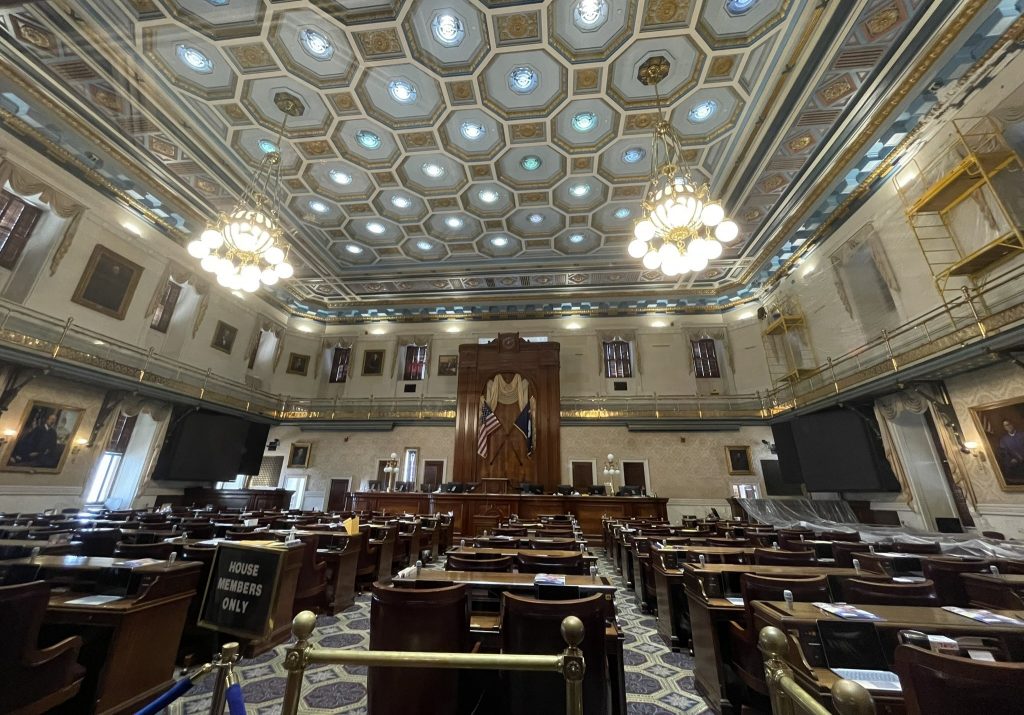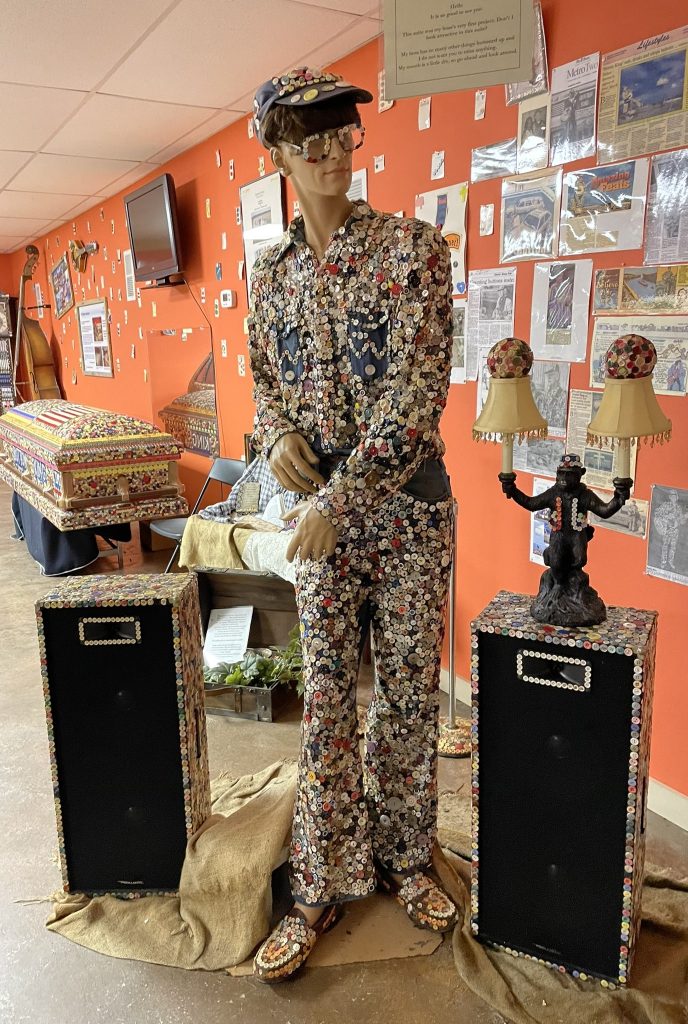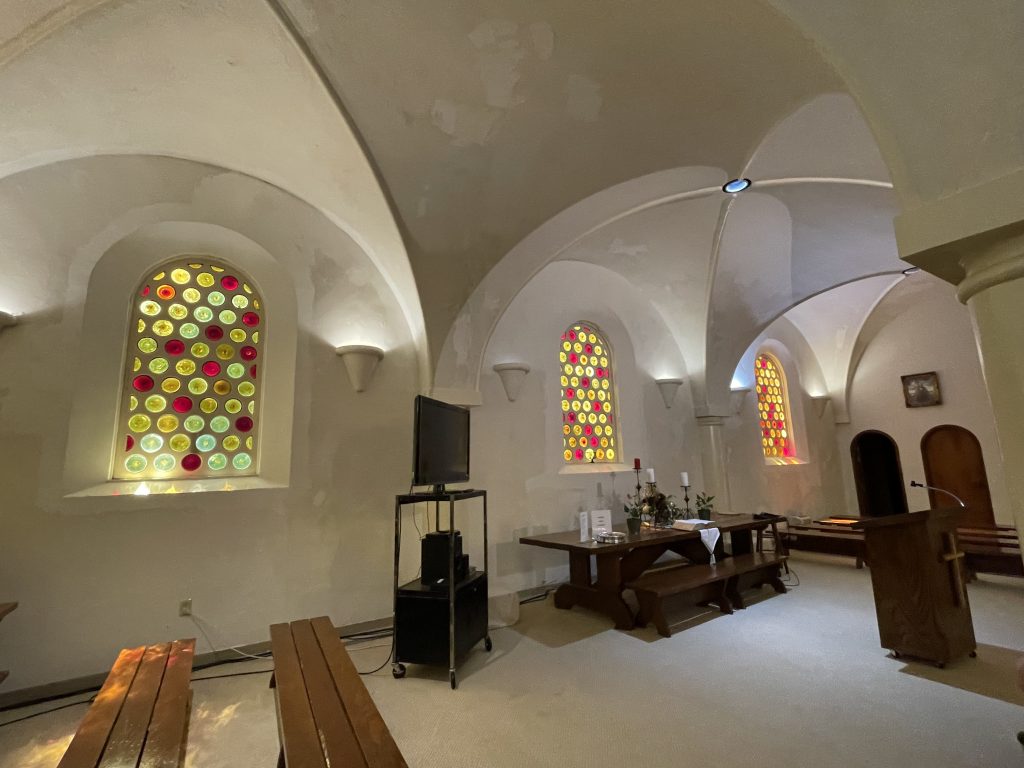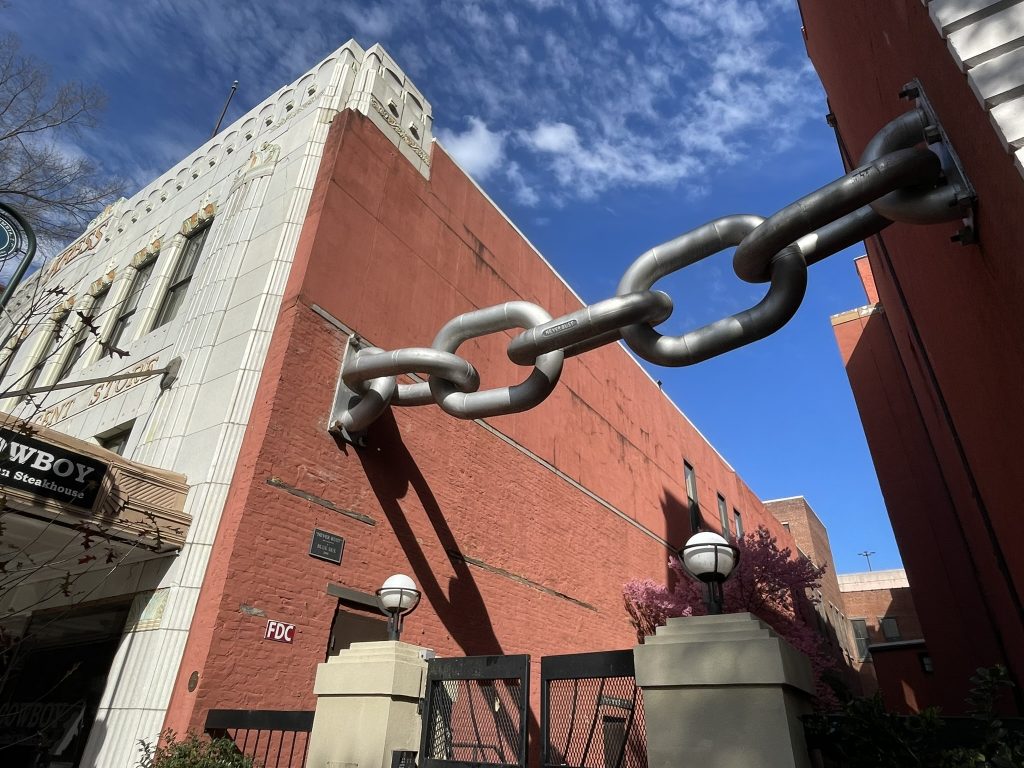
After visiting the absolutely stunning Pennsylvania capitol building, we decided we’d try to see all 50 (which is more difficult than you’d think).
For instance, while we were just in Raleigh, the capitol was closed for renovations. Throw in limited hours for tours and limited availability of downtown parking for oversized vehicles, and you can see the challenges.
Fortunately, the South Carolina State House in Columbia (pictured in the cover photo) had frequent tours, which start with a video highlighting the history and what you’ll see on the tour. Then you go see what you just saw in the video.
There’s not much to see, to be honest, and the building was “fine” but didn’t hold a candle to Harrisburg. The ceremonial sword and mace used to signify that the senate and house are in session were amazingly detailed, but we could only view them from a distance.
The first two capital buildings were destroyed by fire, so the goal of this one was to be fireproof. Construction began in 1851, but the usual government problems (fraud, defective materials, funding, etc.) meant progress was slow. The Civil War halted building entirely, and Reconstruction meaning there was no funding to work on the building. The exterior was not completed until 1907.
Right out front is a big ole Confederate monument, dating to 1879. A Confederate flag flew over the statehouse, and then was relocated near the monument in 2000 – and flew there until 2015 (2015 y’all!!). A Monument to Women of the Confederacy from 1912 is also on the grounds.

And lest anyone forget that South Carolina was the first to secede from the Union at the start of the Civil War, a large marble plaque inside the building is inscribed with the names of all of the traitors signers of the document.
Therefore, you’ll understand our surprise and delight in the African-American History Monument, which was amazing and powerful. It features the outline of a slave ship, stones from the African countries the South Carolina-bound enslaved came from, images of slavery and emancipation on the left, and images of the Civil Rights struggle and progress on the right.



We always delight in the absurd, hence we found ourselves in the Button Museum in Bishopville. You simply drive onto private property, enter a building, turn on the lights, and behold the wonder before you.
Dalton Stevens (1930-2016) had insomnia, and one night in 1983 he started sewing buttons onto a pair of jeans. An obsession was born. Four years later the blue jeans were done, followed by a shirt and cap, with more than 16,000 buttons sewed in place and weighing 16 pounds!
Stevens expanded to gluing buttons on things, eventually covering a car, a hearse, a piano, two caskets (one to be buried in and one for display), and much more. Known as the Button King, Dalton made appearances on The Tonight Show, David Letterman, and more. Stevens performed button-themed songs on his button-covered guitar.
The museum opened in 2008, now a tribute to a man with a love of whimsy and a good sense of humor. While we were there, his son popped in to welcome us and answer questions.





The Upper Room Chapel in Fort Mill is an “identical” replica of the real Upper Room in Jerusalem, where the Last Supper was held. It was built as part of the now-defunct Heritage USA complex. Per their website, it was “painstakingly built to specifications” and “is about as close to the real thing as one could imagine.”
Heritage USA was a Christian-themed complex consisting of a theme park, office and residential buildings, conference center, religious sites, and educational facilities. It was built by the now-infamous televangelist Jim Bakker and his wife Tammy Faye Bakker (founders of The PTL Club). It opened in 1978, and the theme park was the third largest in attendance, behind only the Disney parks in Florida and California!
However, financial misdealings, revocation of their tax-exempt status, the Jessica Hahn scandal, (etc., etc., etc.), caused the closing of Heritage USA in 1987. The Upper Room Chapel sat idle for 20 years, and was on the verge of being demolished. A “friends of” group rescued it, and re-opened it in 2011.
We weren’t sure if we could even get in to see it, as online info was sketchy at best. Imagine our delight when the door opened! An attending couple in residence was happy to tell us about the room (and to discuss some religious insights), so our visit ended up being a bit longer than just grabbing a quick peek and moving along.

We went to the Florence County Museum to see the works of William H. Johnson (1901 – 1970), an artist whose hometown was Florence.
His art moved through several different styles and areas of focus over his career (as seen by the small sampling here), though he is best known for his folk style of art that focused “almost entirely on the lives and experiences of African Americans in the rural South.”


The sign describes his life thus:
…a man between worlds: raised in the rural South, but educated in New York; black, but his unknown father was white; American-born, but lived much of his adult life in Europe. This diverse heritage gave Johnson a unique perspective and insight, but at times it was also a difficult shadow which followed him as he traveled the world in search of his true artistic voice.
Doug found Johnson’s later work quite compelling, and we left feeling a bit melancholy after taking in the moody landscapes and portraits on display.


Here are a couple of other sites that we took in during our travels through the state.








Loved the “Button King” part of this post… Absurd indeed! Love reading about all of your adventures.
Don’t get any ideas with your own buttons!!